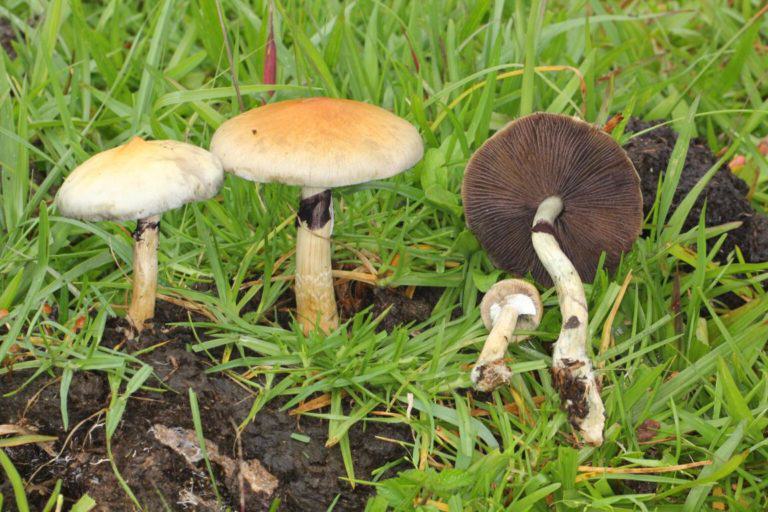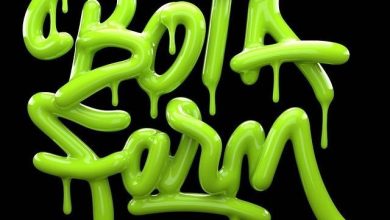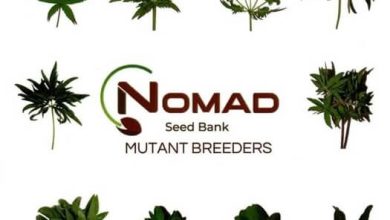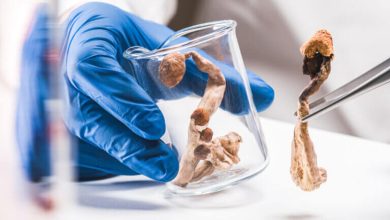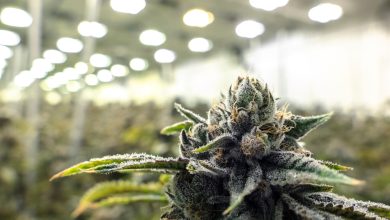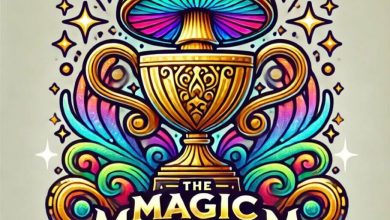Blueing and magic mushrooms- Alchimia Grow Shop
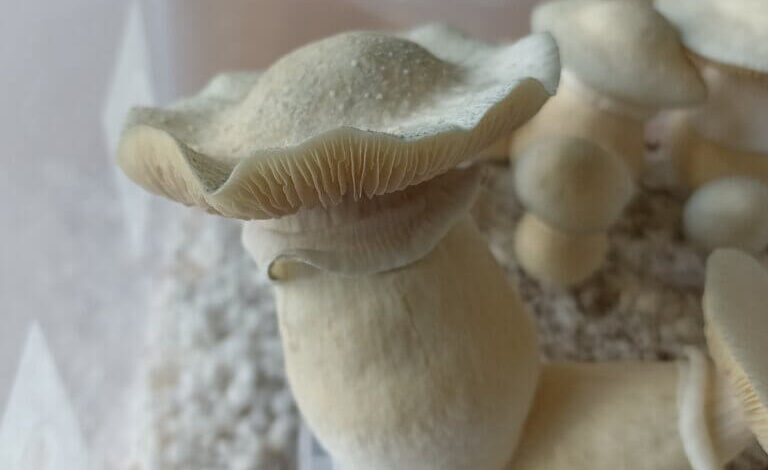
Psilocybin, the psychoactive compound present in certain hallucinogenic mushrooms, has been the subject of fascination and study for decades. One of the most intriguing phenomena related to these mushrooms is the blueing that occurs when they are handled or damaged. This color change in the mushroom flesh is often considered a visual indicator of the presence of psilocybin and other psychoactive compounds and is a topic of great interest to enthusiasts, researchers, and the curious alike. But be careful, because not all mushrooms of this type develop it, and there are mushrooms without psilocybin that do.
In this article, we invite you to discover what the phenomenon of blueing in magic mushrooms is, its relationship with psychoactive effects, the factors that influence it, and what it reveals about the chemistry and biology of these amazing mushroom species. However, let us tell you… it is a normal process and you should not worry at all!
What is blueing in psilocybin mushrooms?
Blueing is a fascinating and distinctive phenomenon that occurs in some mushrooms that contain psilocybin, a psychoactive compound known for its hallucinogenic properties. This chemical and visual reaction is a key characteristic that psilocybin mushroom hobbyists and collectors often look for as an indicator of the presence of this psychoactive substance, although it should be noted that not all magic mushrooms produce this phenomenon, and that some non-psilocybin mushrooms can also present these blue spots.
If you’ve ever grown magic mushrooms, you’ve probably seen it when harvesting them; The feet of the mushrooms, which when they were still attached to the mycelium looked a spectacular white color, begin to develop blue spots when harvested…why? Well, it is not about anything related to the fact of separating them from the mycelium, but rather it is a reaction to the “damage” caused to their structure when handling them during harvest.
What is Psilocybin and what are its effects?
After decades of neglect, psilocybin is nowadays the subject of dozens of studies and clinical trials all over the world, showing especially promising results in the treatment of conditions like depression or anxiety. In addition to its well-known properties in recreational or spiritual contexts, the news regarding its possible medicinal properties further adds to the interest to this compound.
Causes of blueing of fungi
We already know that blueing is the result of a series of complex biochemical processes that occur within fungi when they are damaged or manipulated, but what exactly happens? We detail it below:
- Presence of psilocybin and psilocin: The key factor behind the blueing in psilocybin mushrooms is the presence of psilocybin and its derivative, psilocin, in the mushroom cells. These compounds are responsible for the psychoactive effects experienced when consuming psilocybin mushrooms. When the cellular structure of the fungus is broken, whether by cutting, crushing, or handling, the enzymes and chemical compounds within the fungus come into contact with oxygen in the air.
- Oxidation: When psilocybin and psilocin come into contact with oxygen, they begin to oxidize. This oxidation process is what causes the color change towards blue tones. Oxidation is a chemical reaction in which electrons are transferred between molecules, resulting in a chemical transformation and an obvious color change, which can be seen with the naked eye.
- Formation of oxidation products: During this oxidation process of psilocybin and psilocin, oxidation products are formed, some of which are blue in color. These blue oxidation products are responsible for the characteristic coloration of the mushroom flesh when damaged. The intensity and rapidity of blueing can vary depending on the concentration of psilocybin and psilocin in the mushroom and exposure to oxygen.
- Variability by species: It is important to note that blueing can vary significantly between different species of psilocybin-containing mushrooms. Some species show a very pronounced blueing, as we have seen with White Rabbit, for example, while in others, this phenomenon may be more subtle or even absent.
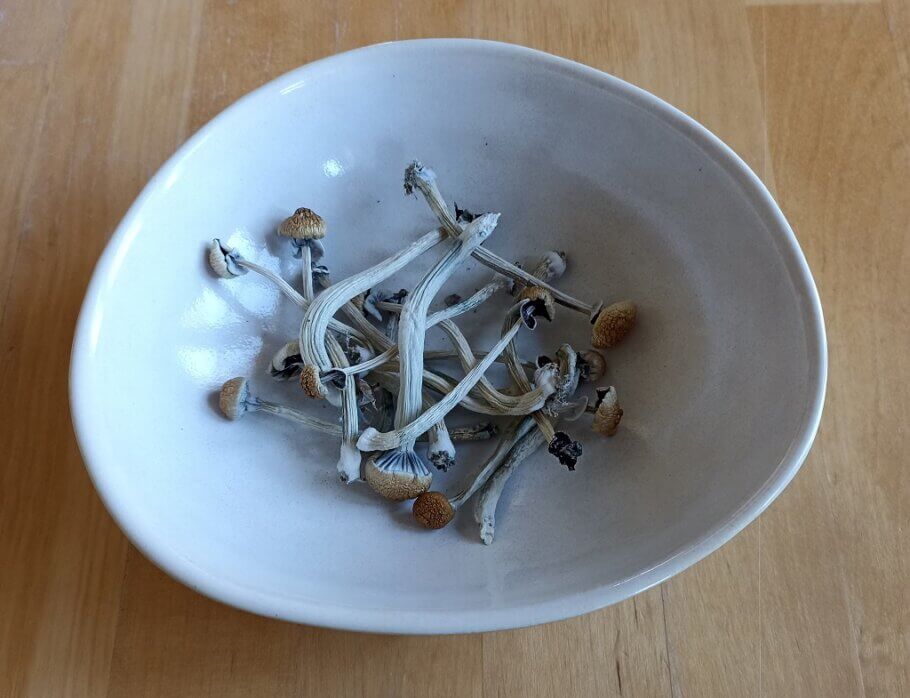
In summary, blueing in psilocybin mushrooms is a chemical response that occurs due to the presence of psychoactive compounds and their interaction with oxygen. This phenomenon is not only a visual indicator of the psychoactive potency of mushrooms, but also adds an element of beauty and mystery to the study of these fascinating species. However, it is essential to remember that, although blueing is an indicator of the presence of psilocybin, it is not a guarantee of safety, since some species of toxic mushrooms (also edible mushrooms) can show similar reactions, although in these cases not due to the presence of psilocybin, obviously.
When does blueing occur?
As you already know, blueing in psilocybin mushrooms occurs when the mushrooms are damaged, manipulated, or subjected to mechanical stress. This chemical and visual reaction usually manifests itself as a darkening or discoloration of the part of the mushroom that has been touched or damaged, and can vary in intensity and speed depending on the species of mushroom and its state of freshness.
It is important to note that blueing is not a phenomenon that occurs at the exact moment a psilocybin mushroom is harvested (although in some cases it is almost instantaneous), but rather usually develops within minutes or hours after the mushroom is harvested. This chemical reaction is one of the distinctive characteristics that many foragers and enthusiasts look for as a visual indicator of the presence of psilocybin and other psychoactive compounds in mushrooms, suggesting their potential to induce hallucinogenic effects when consumed.
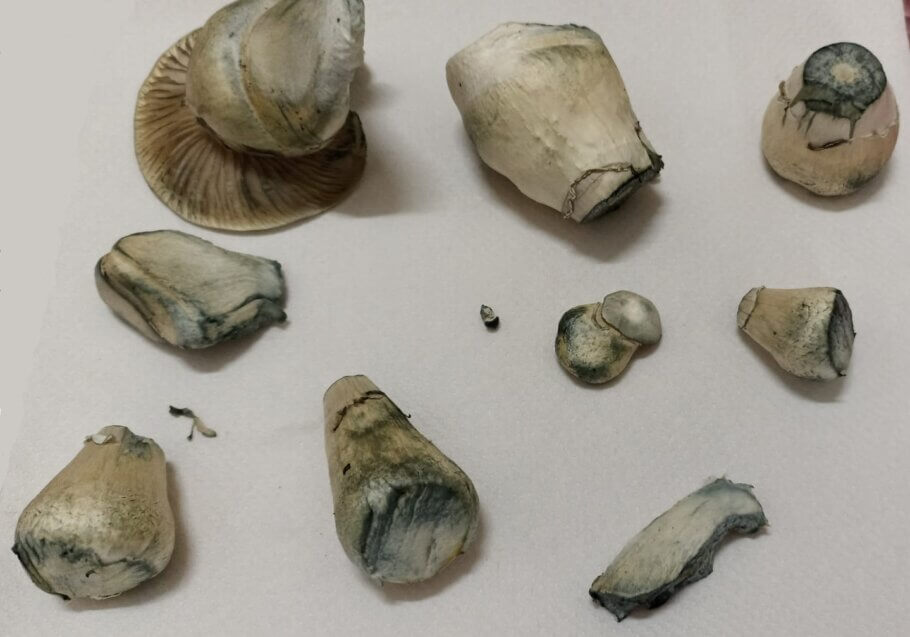
It must be taken into account that blueing is only an indicator of the presence of psychoactive compounds, not their concentration or potency. Not all psilocybin mushrooms will display the same intensity of blueing, and the potency of the mushrooms can vary significantly between species and strains. Therefore, when collecting and consuming psilocybin mushrooms, it is crucial to consider additional identification and safety factors, and it is always recommended to have a solid knowledge of mycology before venturing into collecting and consuming them. For this reason, the majority of magic mushroom consumers prefer to buy hallucinogenic mushroom spores or already inoculated cakes and thus be sure of the variety they are consuming.
Blueing in the mycelium?
On some occasions, the mycelium (that compact mass of immaculate white) may present symptoms of blueing but… is that possible? Well yes, in the same way that their fruiting bodies (mushrooms) can present it, the same happens with the mycelium, which can develop blue spots if it has been handled incorrectly (without too much care) or if it has oxidized.
However, these blue spots can sometimes be confused with contamination from other fungi or bacteria; Indeed, on certain occasions, contamination will also appear as blue spots on the mycelium, so if they are found, their origin must be correctly diagnosed. To do this there is a very simple method; Simply rub the spot lightly with a sterile dressing or q-tip. If the dressing is clean, it means that you are facing a case of blueing in the mycelium; On the other hand, if it is stained, it is more than likely that it is contaminated, so the mycelium or cake should be discarded.
As you can see, blueing in psilocybin mushrooms such as Psilocybe Cubensis or Psilocybe Azurescens is very normal, and simply indicates that the body of the mushroom has received some damage, without influencing its production or psilocybin content. As always, don’t hesitate to leave us your comments or questions!
The articles published by Alchimiaweb, S.L. are reserved for adult clients only. We would like to remind our customers that cannabis seeds are not listed in the European Community catalogue. They are products intended for genetic conservation and collecting, in no case for cultivation. In some countries it is strictly forbidden to germinate cannabis seeds, other than those authorised by the European Union. We recommend our customers not to infringe the law in any way, we are not responsible for their use.
